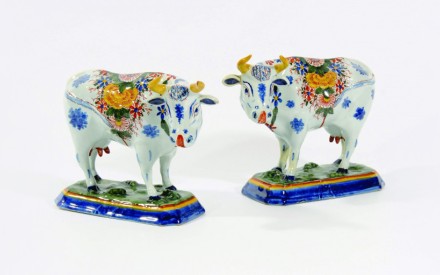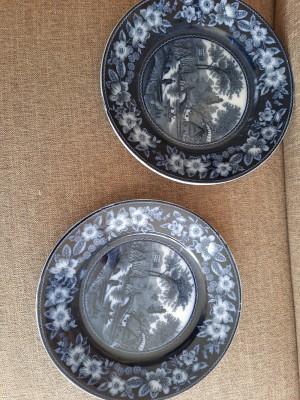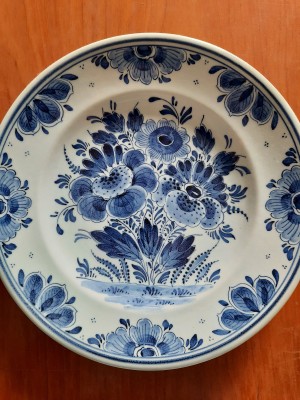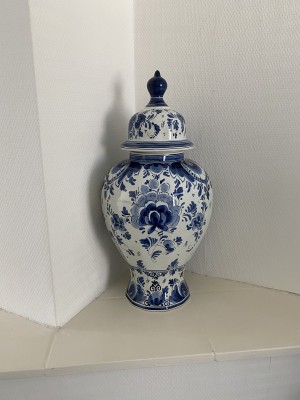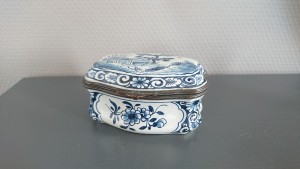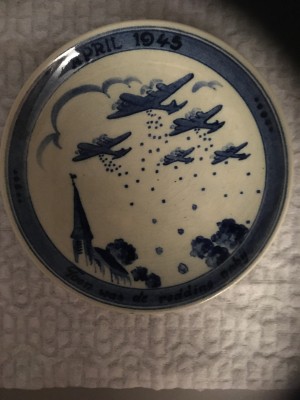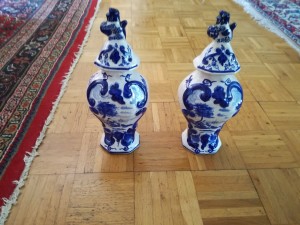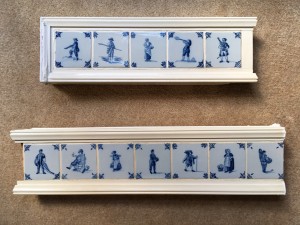Publications
Last comments
Verdict:
- Not Delftware
Analysis:
- Not made in Delft
- Not earthenware
- No mark visible
Op basis van de foto's betreft het een Japans porseleinen bord vervaardigd omstreeks 1920.
Verdict:
- Not Delftware
Analysis:
- Not made in Delft
- More recent production technique
- Not hand-painted
- Mark is stamped
- Mark of a non-Delft pottery/factory
Zoals Jan van den Heuvel al aangeeft, is het bord vervaardigd bij Société Céramique te Maastricht. Deze bakkerij was actief van 1859 tot 1958.
Verdict:
- Not Delftware
Analysis:
- Not made in Delft
- More recent production technique
- Hand-painted
- Unidentified mark
- Mark of a non-Delft pottery/factory
Op basis van de foto's is het bord waarschijnlijk in de tweede helft van de twintigste eeuw vervaardigd. Het is helaas niet duidelijk in welke fabriek het bord vervaardigd is.
Verdict:
- Not Delftware
Analysis:
- Not made in Delft
- More recent production technique
- Hand-painted
- Unidentified mark
- Mark of a non-Delft pottery/factory
Zoals Jan van den Heuvel al aangeeft is de dekselpot waarschijnlijk in de tweede helft van de twintigste eeuw vervaardigd.
Verdict:
- Not Delftware
Analysis:
- Not made in Delft
- More recent production technique
- Hand-painted
- Unidentified mark
- Mark of a non-Delft pottery/factory
Afgaande op de rode scherf die op de foto's te zien is, is het doosje mogelijk vervaardigd in Frankrijk omstreeks 1900.
Verdict:
- Not Delftware
Analysis:
- Not made in Delft
- More recent production technique
- Hand-painted
- Mark of a non-Delft pottery/factory
Zoals Jan van den Heuvel al heeft geschreven is het bord vervaardigd bij plateelbakkerij en pijpenfabrieken Zenith te Gouda. Deze fabriek was actief van 1749 tot 1984.
Verdict:
- Not Delftware
Analysis:
- Not made in Delft
- More recent production technique
- Hand-painted
- Forged mark
De twee kaststelvazen zijn gemerkt voor de Delftse plateelbakkerij De Drie Klokken, echter op basis van de foto's betreft het hier naar alle waarschijnlijkheid een later imitatiemerk en zijn de vazen waarschijnlijk rond 1900 vervaardigd.
Verdict:
- Not Delftware
Analysis:
- Not made in Delft
- More recent production technique
- Hand-painted
- No mark visible
Verdict:
- Not Delftware
Analysis:
- Not made in Delft
- More recent production technique
- Hand-painted
- No mark visible
Tegeltjes worden vaak aan de hand van een blindstempel aan de achterzijde gemerkt, echter is van de voorzijde niet te bepalen in welke fabriek ze zijn vervaardigd. Waarschijnlijk betreft het in dit geval twintigste-eeuwse tegels.
Verdict:
- Not Delftware
Analysis:
- Not made in Delft
- More recent production technique
- Hand-painted
- Mark of a non-Delft pottery/factory
Zoals Jan van den Heuvel reeds heeft geschreven is de apothekerspot vervaardigd bij Potterie Oud-Delft te Nijmegen. Deze plateelbakkerij was actief van 1920 tot 1996.

